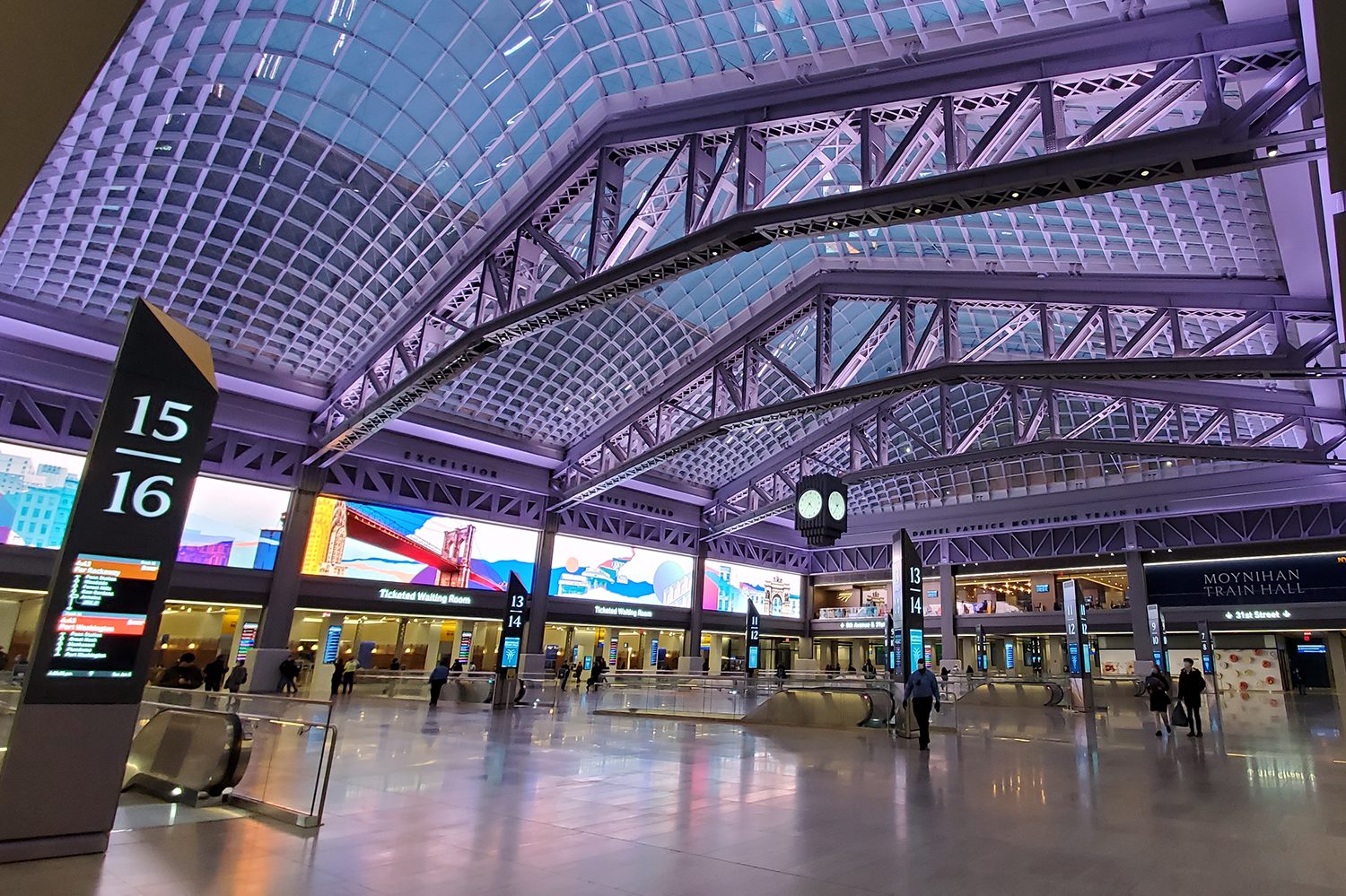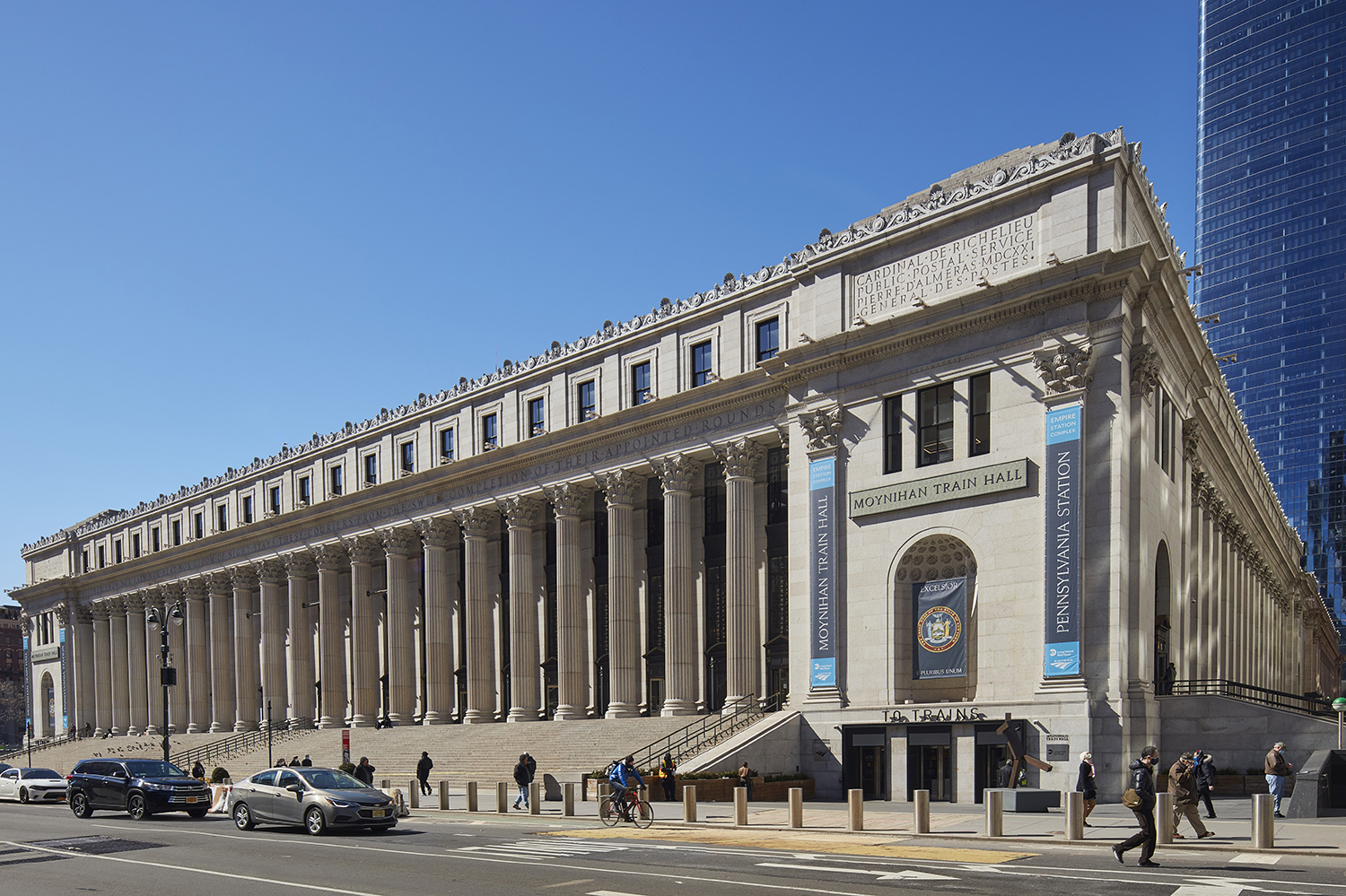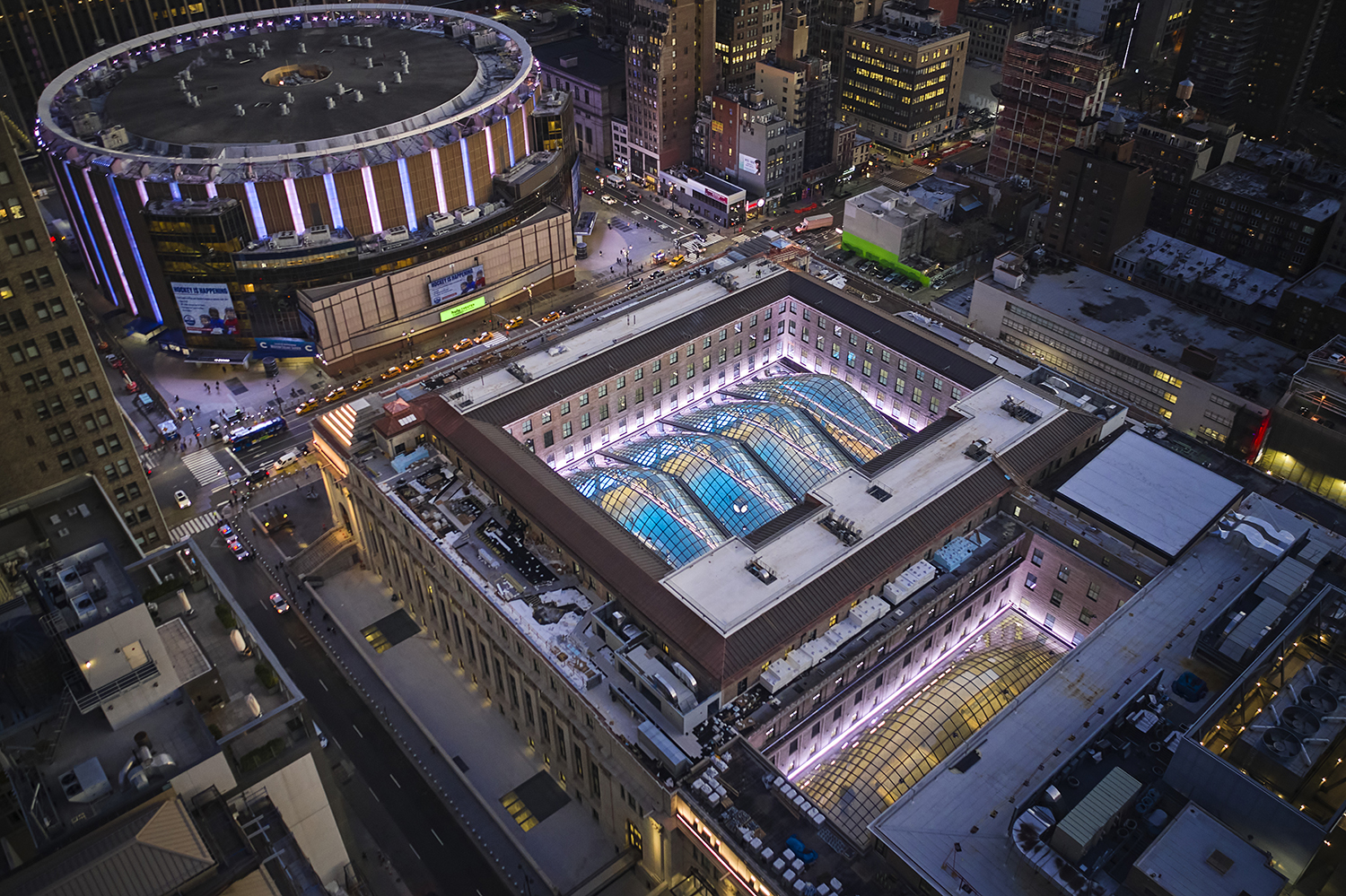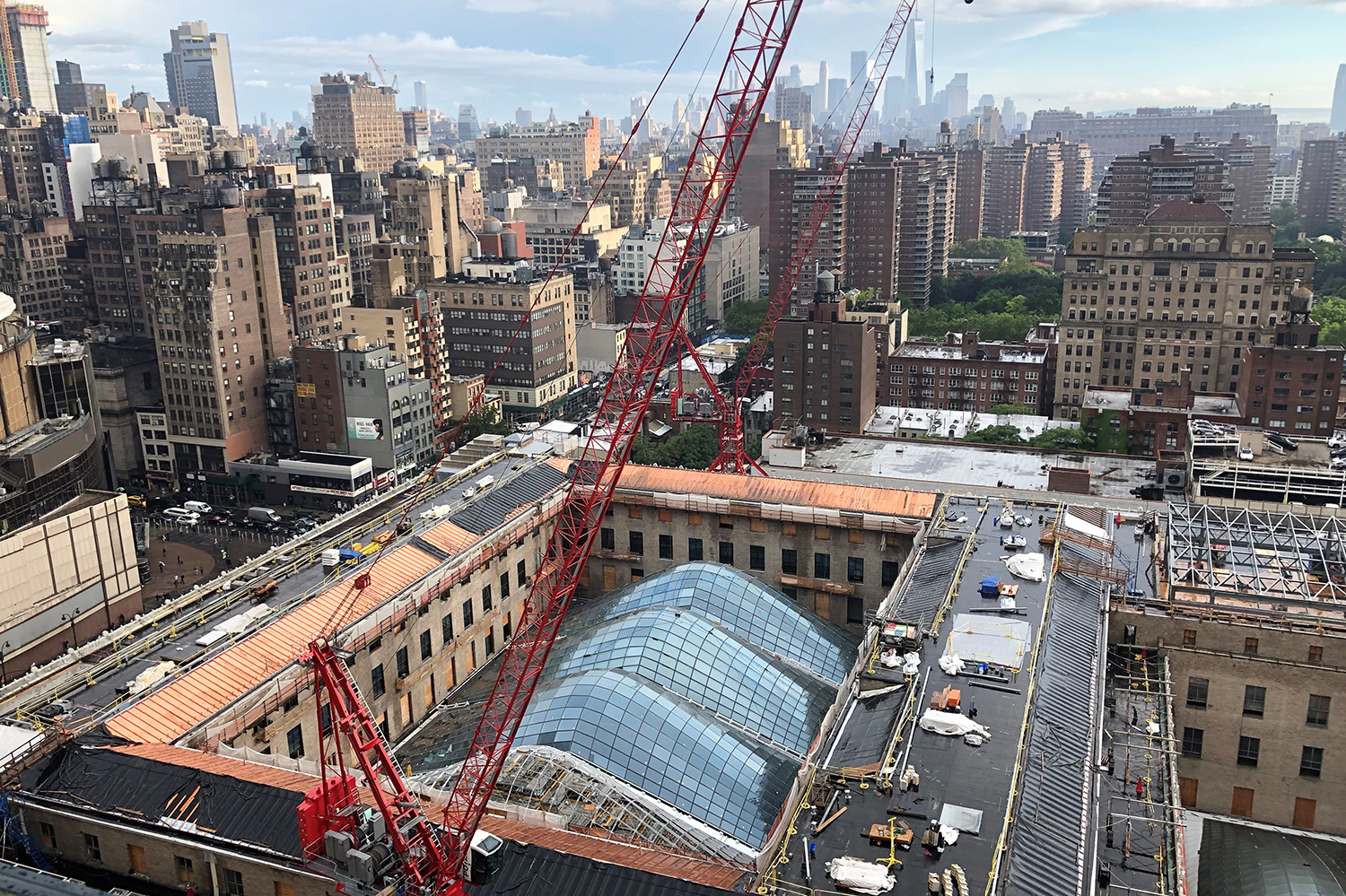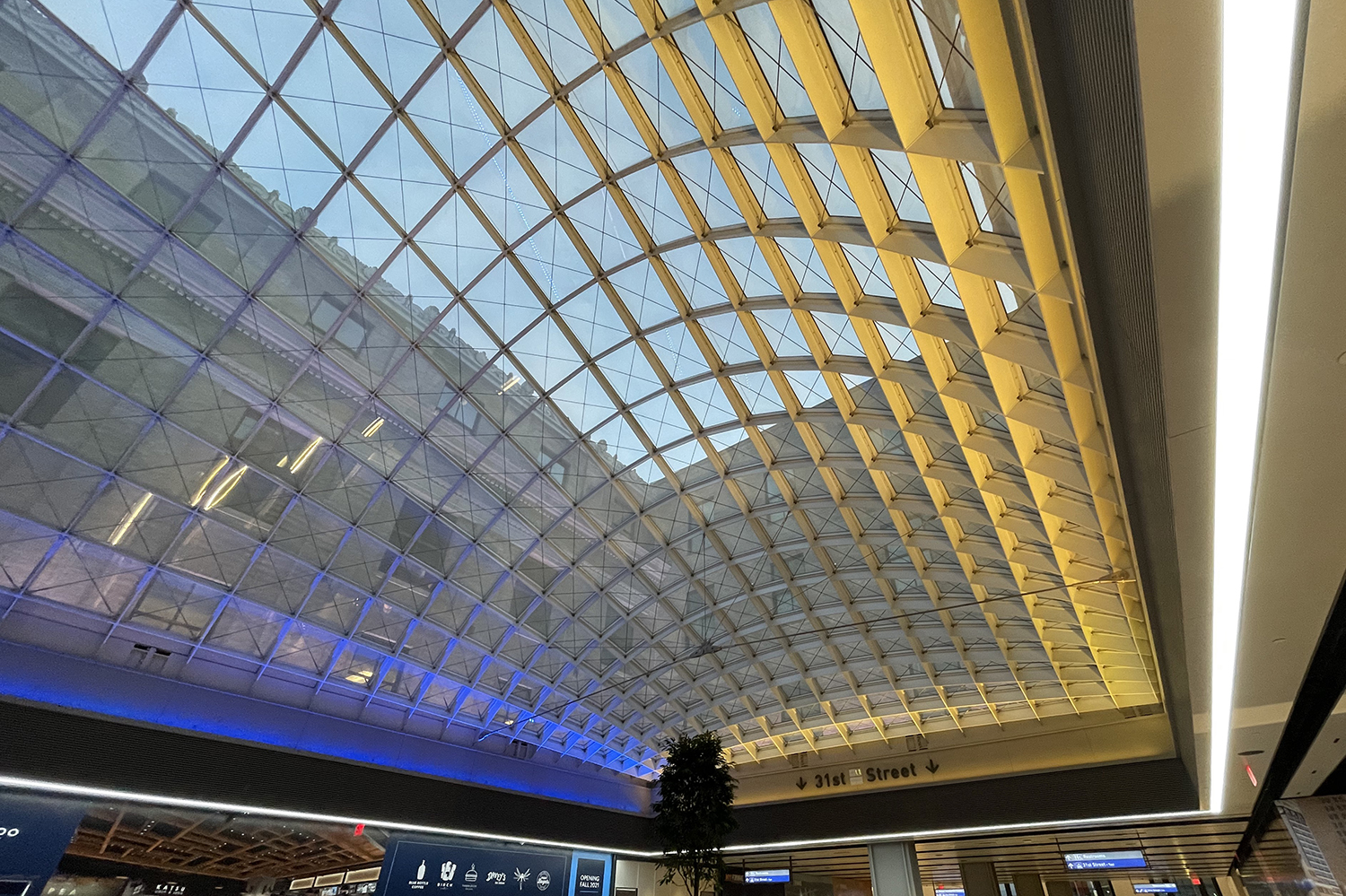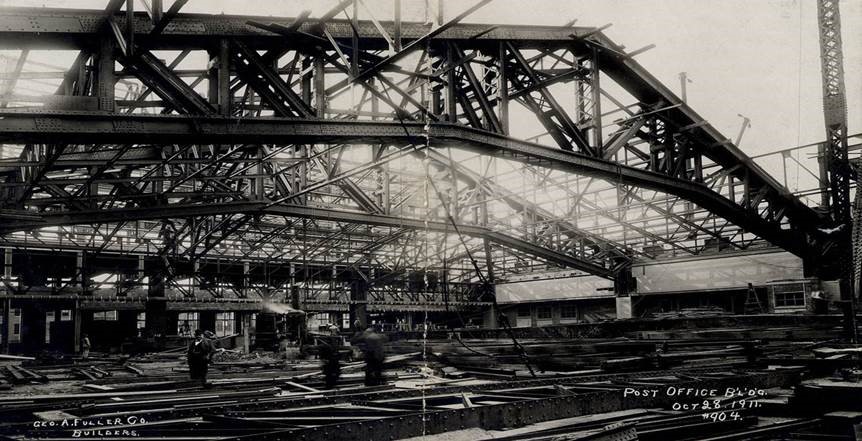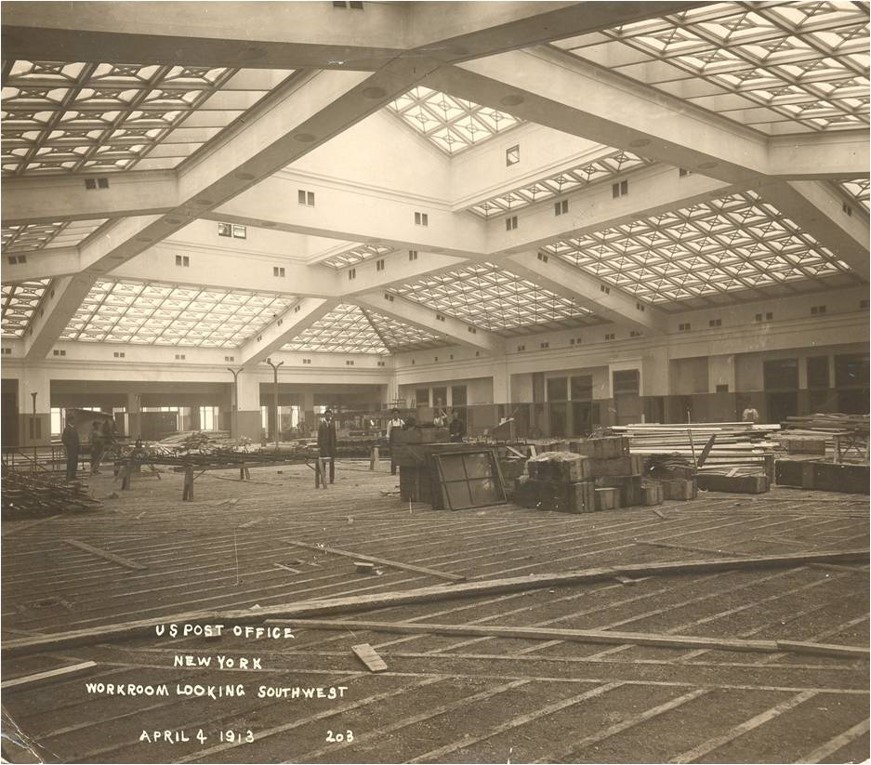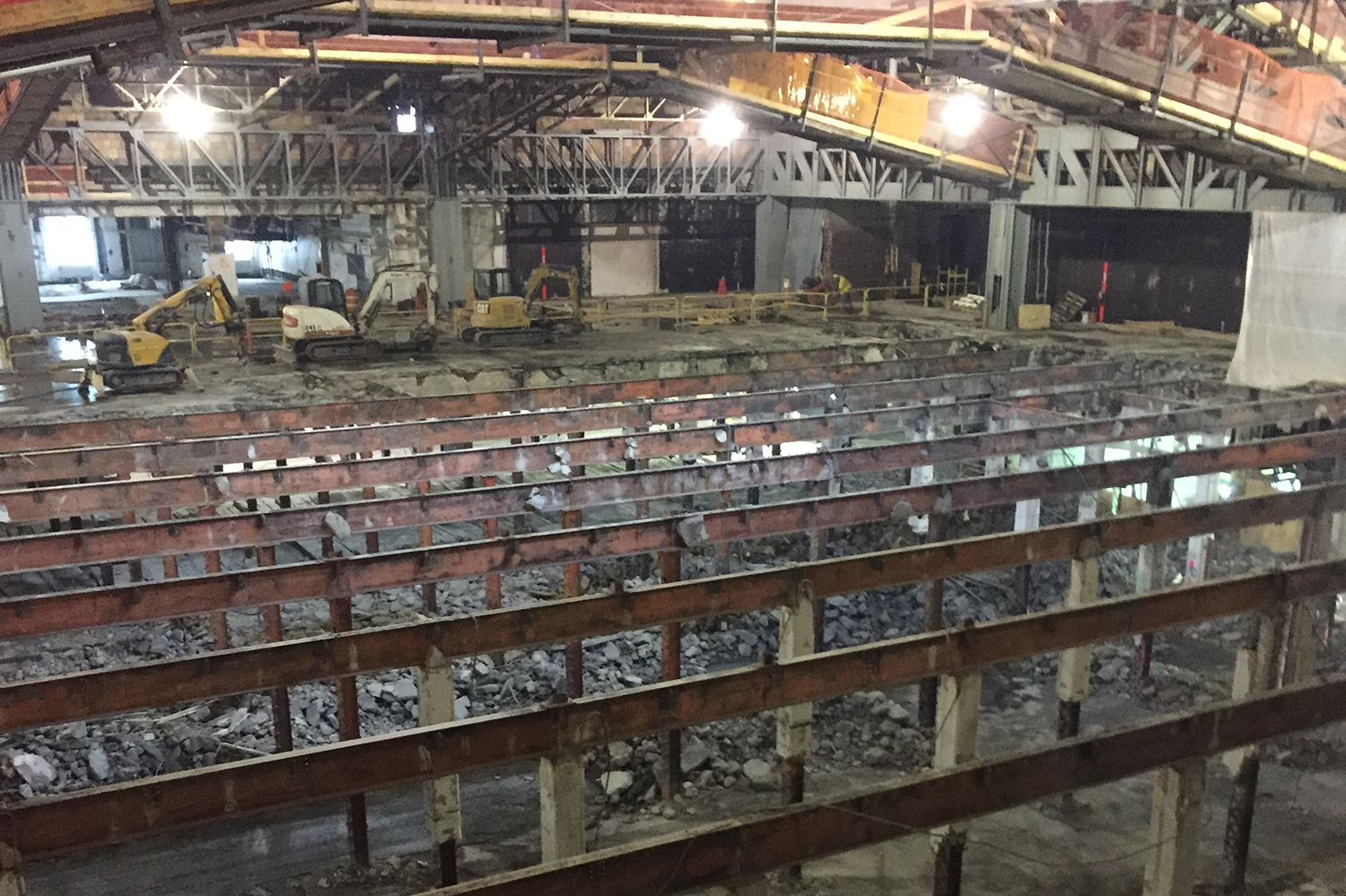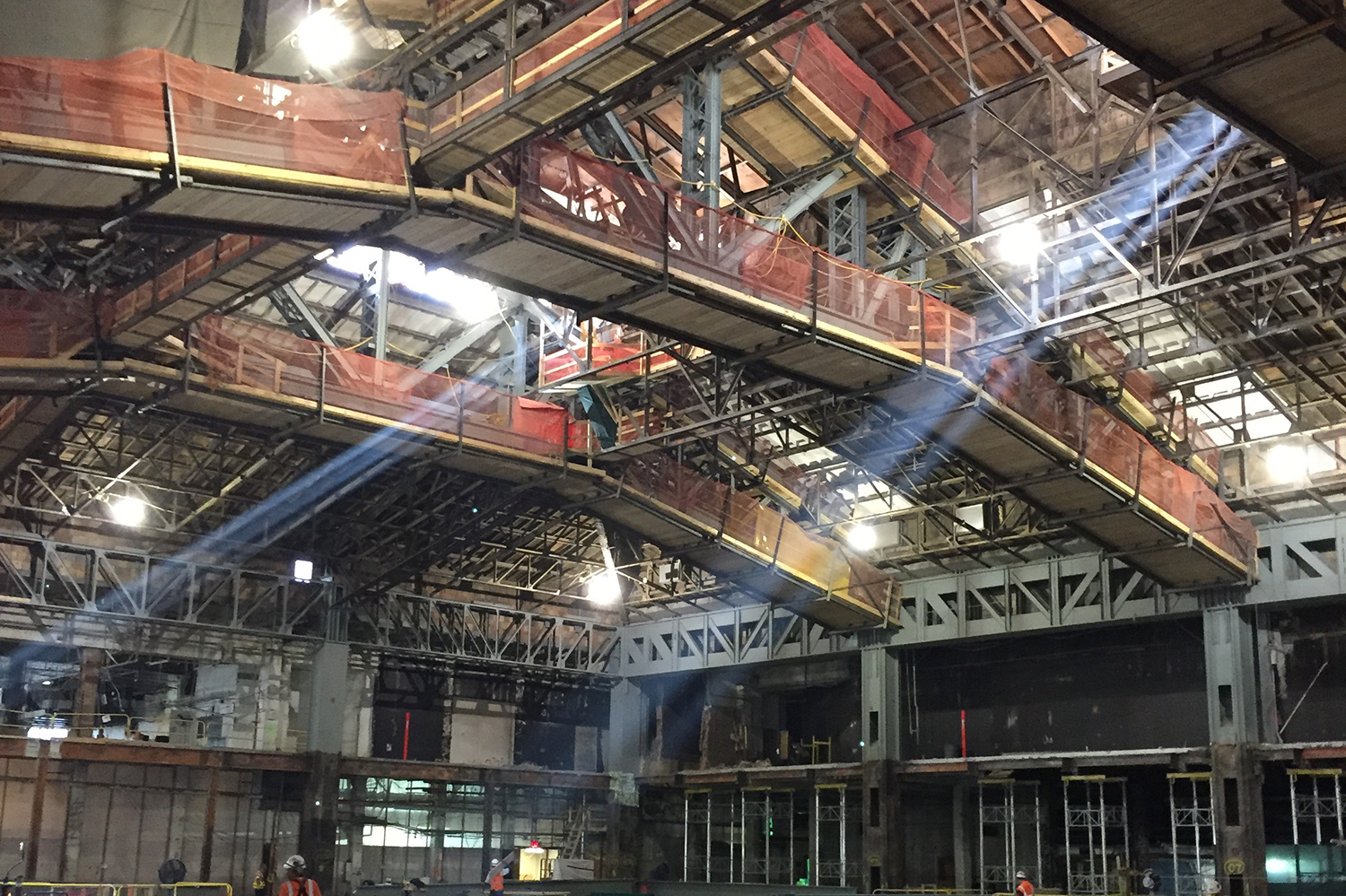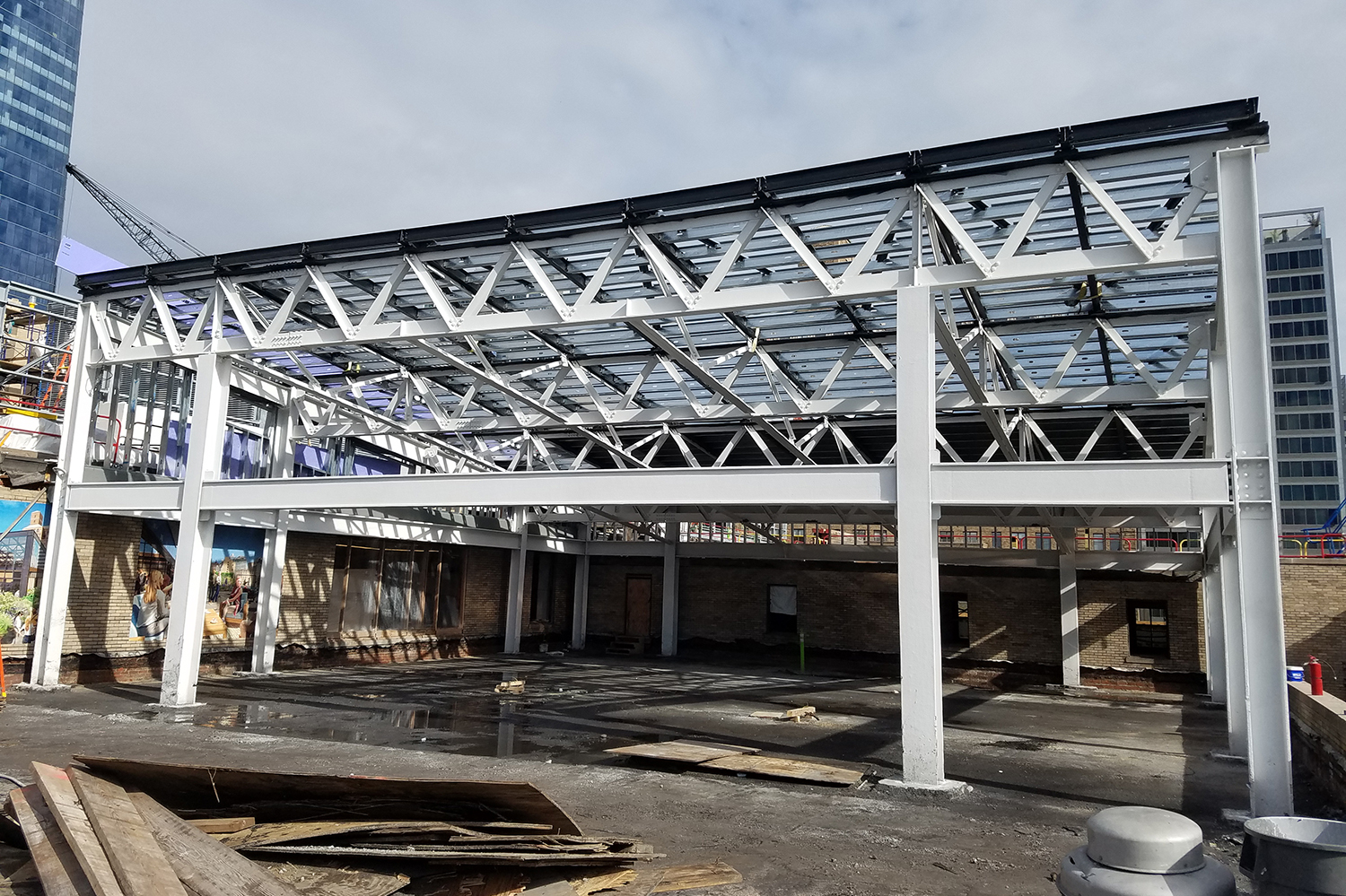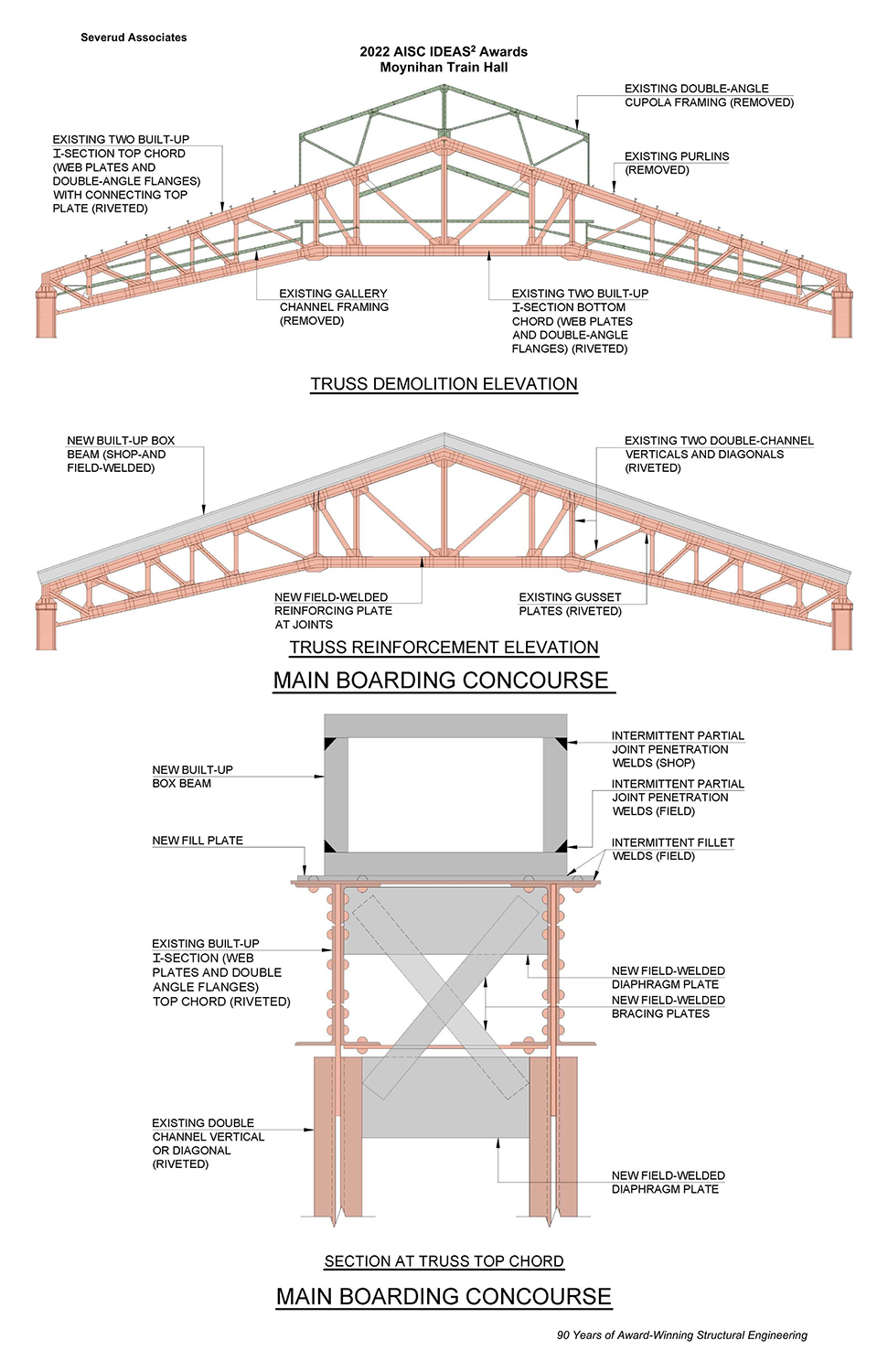AISC
Moynihan Train Hall
Merit Award - Greater than $200 million
New York once again has a grand rail entrance, thanks to the transformation of an early-20th-century postal building into a 21st-century transportation hub.
Moynihan Train Hall expands New York City’s Penn Station across Eighth Avenue and into the landmarked James A. Farley Post Office, designed by McKim, Mead and White in 1912 as a sister to their original Pennsylvania Station. Five decades after the demolition of that Penn Station and 30 years after the plan’s conception, the 255,000-sq.-ft Moynihan Train Hall once again provides visitors with a grand entrance to New York City. Its central feature--the 30,000-sq.-ft, skylit main boarding concourse--increases public space at America’s busiest transit hub by 50%.
For decades, the Farley Building served as Manhattan’s General Post Office. The building’s location over the railroad tracks greatly facilitated the distribution of mail to and from the rest of the country, and operations there increased through the late 20th century. As long-distance delivery transitioned from rail to truck, however, the Postal Service shifted work to other facilities. In 1992, Amtrak proposed a move into the then mostly vacant building. The idea was championed by U.S. Senator Daniel Patrick Moynihan of New York, in whose honor the facility was eventually named.
The Farley building’s historical designation was a direct result of Penn Station’s demolition and the onset of a preservation movement that is still active today. As a landmark, the Beaux-Arts exterior and retail post office could not be altered in any way. However, as a steel-framed structure--one that represents an almost encyclopedic history of the early-20th-century American steel industry, with contributions from Carnegie Brothers, U.S. Steel, and Bethlehem Steel, among other notable shops--Farley was readily adaptable. Reinforcement of roof trusses, reconfiguration of concourse girders framing over live railroad tracks below, and concealed framing within the landmarked walls helped transform the building from a mostly functional 20th-century postal building into a 21st-century transportation hub while maintaining its outward elegance.
Structural steel was the natural choice for redeveloping the Farley building. The original Eighth Avenue building, constructed in 1912, and the Annex, which was built in 1933 and extended Farley all the way west to Ninth Avenue, are framed almost entirely in steel. The original engineers would have chosen steel for its ability to span over multiple railroad tracks--up to 70 ft--while also transferring loads from five levels of framing above. Similarly, the strength of steel allowed the original engineers to use a generous 32-ft by 40-ft column spacing in the Annex. Given the original building’s age, the engineering team cut coupons from portions of the existing steel and tested them for tensile properties, chemical composition, and base metal notch toughness and determined that they typically met or exceeded current standards. In all, 1,000 tons of the building’s existing steel were removed, 4,000 tons were modified, and 6,000 tons of new steel were added. Together, the improvements add station entrances, track access points, and interconnectivity between rail, subway, and street-level modes of transportation.
Aesthetics also played a role in the use of structural steel for Moynihan Train Hall. Steel trusses that span across and enclose the former mail sorting room are now exposed to view. Their latticed members add an extra sense of lightness that could not be attained with another material and establish a modern aesthetic while displaying neoclassical workmanship. Boxes of steel plate, compact and concealed between the top chords and skylights, do nothing to detract from this aesthetic.
Moynihan Train Hall’s central feature is the main boarding concourse. Located in Farley’s former mail sorting room, the 150-ft by 200-ft space is column-free due to three existing steel roof trusses--invisible a century ago--that were uncovered and reinforced to become a significant focal point of the design. Their latticed configuration and riveted connections are reminiscent of framing in the old Penn Station and add delicacy of detail and a sense of lightness, despite their large scale.
The existing trusses had sufficient capacity to carry a new roof. However, all existing framing between the trusses had to be removed to maximize the skylight’s function and appearance. This left them unbraced at their ends and for the full length of their gabled top chords. Restoring the trusses’ stability was, therefore, a central component of the structural design plan.
Each truss is composed of two identical and parallel bents, spaced about 3 ft apart, initially to form an observation gallery for postal inspectors. The bents are tied together with diaphragm plates and latticed straps that terminate about six feet above the bottom chords. A box beam 36 in. wide by 24 in. deep, composed of 3.5-in.-thick steel plates and located along the top of each truss, provided sufficient lateral support while remaining concealed beneath the skylights. The box beams also deliver lateral loads to the ends of the trusses and eliminate the need for bracing between them.
The skylights themselves were designed as four independent modules, 50 ft by 150 ft, and arched in cross section, which follow the top truss chords and enclose the concourse. The structures are lightweight grids of steel tees of varying depths spaced with 3 ft to 4 ft between them. The frameworks are internally braced with in-plane diagonal cables and transverse “spiderwebs” of cables at the existing truss third points.
The trusses required additional reinforcements to maintain stability under the skylight loading. Diaphragm plates were welded between each pair of existing truss bents, at the top of the top chords and just below them, and then diagonal bracing plates were welded to the diaphragms to prevent rotation where the bracing cables connect. Finally, plates were welded to tie together pairs of truss bottom chords at each panel point as a replacement for framing elements that were removed.
Existing double-bent trusses also frame the perimeter of the train hall, supporting the low roof between the skylights and Farley building office wings, and are now exposed to view. With a uniform horizontal profile but located at about the main truss bottom chord level, the perimeter trusses are too low to support the new skylights directly. So instead, existing columns were extended up to the box beam elevation, and new framing was installed between them. At the ends of the box beams, steel tube diagonals were welded from each side down to the first perimeter truss panel point to prevent rotation and transfer lateral loads into the building frame.
For more on the Moynihan Train Hall project, see “Station to Station” in the August 2021 issue of Modern Steel Construction.
Judge comment: “What was fascinating is that the structure, which had been perhaps wrapped in plaster for 100-plus years, is now unwrapped and has been exposed to view and becomes part of the sculpture of this beautiful space. It shows the resilience of steel: You can take that 110-year-old truss and still keep it working.” -Helen Torres, SE, PE, LEED AP, president and founder, Helen Torres & Associates
Owner: New York State/Empire State Development, New York
General contractors: Vornado Realty Trust, The Related Companies, and Skanska, East Elmhurst, N.Y.
Architect: Skidmore, Owings & Merrill, New York
Structural engineer: Severud Associates Consulting Engineers, PC, New York
Steel fabricators:
- Crystal Steel Fabricators/Crystal Metalworks, Delmar, Del. (primary)*AISC full member, AISC certified fabricator*
- L & M Fabrication, Bath, Pa. (plate reinforcement) *AISC full member, AISC certified fabricator*
- Stateline Fabricators, LLC, Harmony, N.J. (Phase 3, Annex core) *AISC full member, AISC certified fabricator*
Detailers:
- Anatomic Iron Steel Detailing, North Vancouver, B.C., Canada (Phase 1) *AISC associate member*
- International Design Services, Inc., St. Louis (Phase 2 column and girder reinforcement) *AISC associate member*
- Project Category: Year 2023
- Location: New York, NY
- Submitting Firm: Severud Associates Consulting Engineers, PC
- Photo Credit: 1, 4, 5, 8, 9, 10, 11 - Severud; 2 - Dave Burk © Empire State Development-SOM; 3 - Lucas Blair Simpson & Aaron Fedor © Empire State Development-SOM; 6, 7 - New York State/Empire State Development

